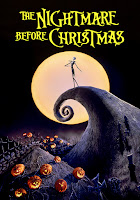Magnolia - Melodramatic Counterpoint
Thoughts On: Magnolia (1999)
A presentation of dysfunctional families on the verge of breakdown.
I almost forgot how tremendous this film is. Tom Cruise's character and performance was always what pushed this over the edge for me; the intensity and confused honesty that eventually emerges around the character and performance is gold. Second to Cruise has to be John C. Riley's character and performance. Like Cruise's character, Riley's sits at the positive heart of the film to reflect the hope within it from the most complicated angles.
Magnolia, simply put, is about synchronicity: meaningful coincidences. Seen with reflections upon statistics, the film is quite dry; while strange things occur in life, their meaning is assigned in ignorance of all the mundane things that happen in much greater proportion. But, I like the final statement made by the young kid on the TV show: this is something that happens. Through this statement, one can understand that Magnolia is less about strangely meaningful things that happen sometimes, but rather meaningful things that happen all the time. Synchronicity - meaningful coincidences - is found to be a sensation without conclusion in this film; it is therefore downplayed. We see this with the frogs. The frogs falling from the sky give one the sensation that everything in the film concludes in a strangely meaningful manner - that this never happens. However, this is but a feeling that directs one towards a more mundane meaning. Frogs falling from the sky may never happen, especially in tandem with the drama presented, but the drama between characters themselves is very common. The frogs falling from the sky is therefore a distraction, or rather a trigger, more than a substantial event of the film. It is a moment of synchronicity, but not the meaning of the film itself.
All characters in Magnolia are bound by a panic in love; they are each existentially seeking, or in pain because of an absence of, love. This is the love of a parent, partner or child. In such, all characters are the same person in so many ways. While one may have cancer and another is debilitated from past trauma, they all are dying in a similar way, reaching out to someone for help. What PTA does so ingeniously with this script is to differentiate all of these stories before revealing, in the end, their parallels. The result of this is the last scene with the frogs. All characters face their dramatic hamartia and make the right decision for them in that moment; from being honest to a desired one to falling away from suicide, each action is symbolically the same. Under this symbolism is then an affirmation of the power of love as a guiding archetype in life and between people; followed correctly, love brings characters where they need to be to grow out of their darkness, whether it hurts or not.
The brilliance of Magnolia is its presentation of this symbolic continuity across different lives that asserts simply: this is a thing that happens. We all will face death, lose loved ones, face trauma through relationships, hurt family and forget ourselves. Magnolia makes a melodrama - a structured, symphonic movement of actions - out of this, producing meaning by resolving the existential drama. Its use of characters all singing the same song, literally as well as through their dramatic lives, is slowly layered on top of one another, manifesting a cinematic conception of counterpoint. In music, counterpoint is the layering of different themes and therefore the creation of a new one. Magnolia uses many stories, thematically similar, layers them on top of one another through montage, as to create a larger echo; a new, deeper theme. Such rings with most clarity in the final scenes when all individual meanings concerning synchronicity coalesce into the greater meaning that meaningful events are a constant part of life; despite being uncommon, they emerge from the quotidian.










